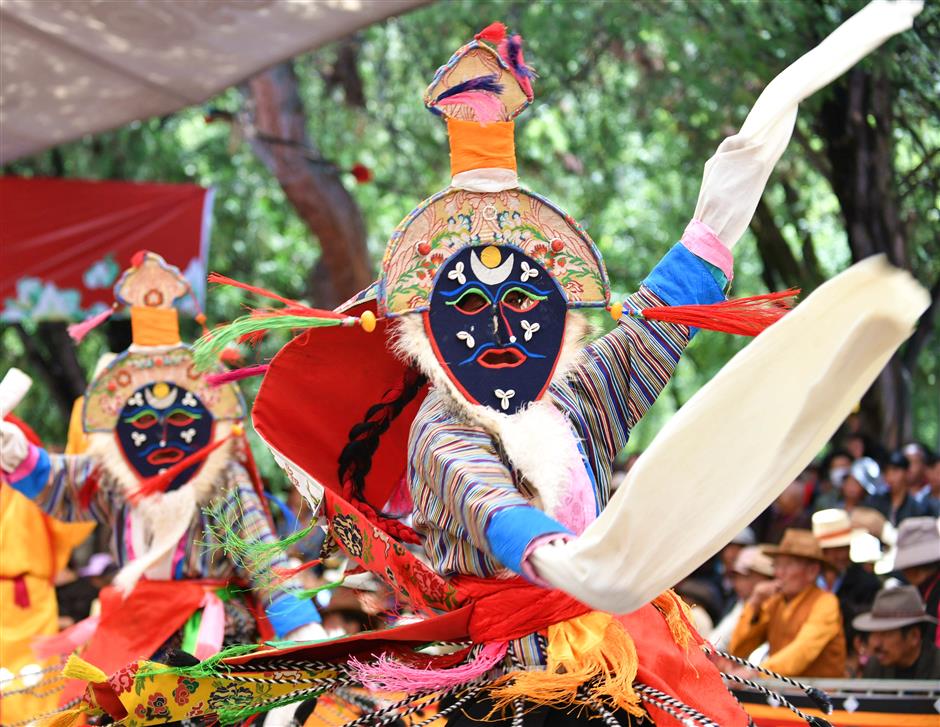Thangka art paves way for success

Artists perform Tibetan opera to celebrate the Shoton Festival, or Yogurt Festival, in Lhasa, capital of southwest China’s Tibet Autonomous Region, on Sunday. This year’s event will also feature the traditional “sunning of the Buddha” ceremonies, with huge Thangka paintings bearing the image of the Buddha displayed on the hillsides near the Drepung and Sera monasteries, as well as horse riding performances and an ethnic costume show.
Eighteen-year-old Dekyi Drolma has heard of many successful experiences of the alumni of her school — opening Thangka painting studios, winning notable awards in Thangka painting competitions and holding solo exhibitions — and she wants similar success.
Dekyi Drolma dreams of becoming an outstanding Thangka painter, learning the mysterious and traditional Tibetan Buddhist art and making a contribution to the development of the art.
She participated in a Thangka painting competition held in Huangnan Tibetan Autonomous Prefecture in northwest China’s Qinghai Province last week, with more than 400 contestants from across the country. “I hope I can get good marks so that I can get closer to my dream,” she said.
Huangnan is the cradle of Regong arts, which are Tibetan Buddhist works tracing their origins to the 10th century. Regong arts include Thangka painting, sculpture and engraving.
Thangka are usually painted on cotton or silk, depicting images of Buddhist deities. As Thangka uses mineral pigment, bright colors on the paintings last a long time. It was listed as a UNESCO Intangible Cultural Heritage of Humanity in 2009.
However, previously this kind of exquisite artwork could only be seen in monasteries, the painting skills only passed on to a few monks.
Since the local government began promoting Regong arts in recent years, Thangka has become more well-known.
Local schools have also started to teach Thangka painting.
Dekyi Drolma is now studying Thangka painting in a vocational college in the prefecture. She needs to spend three years to learn every step in the process from preparing materials and making pigment to coloring. Her courses run from 7am to 8:30pm everyday.
“We are required to concentrate our mind on the painting. Although it takes more than 10 hours per day, I feel relaxed and peaceful in the process of drawing Buddhist deities. I’m very glad that I engage in this kind of art and will make it my career,” she said.















